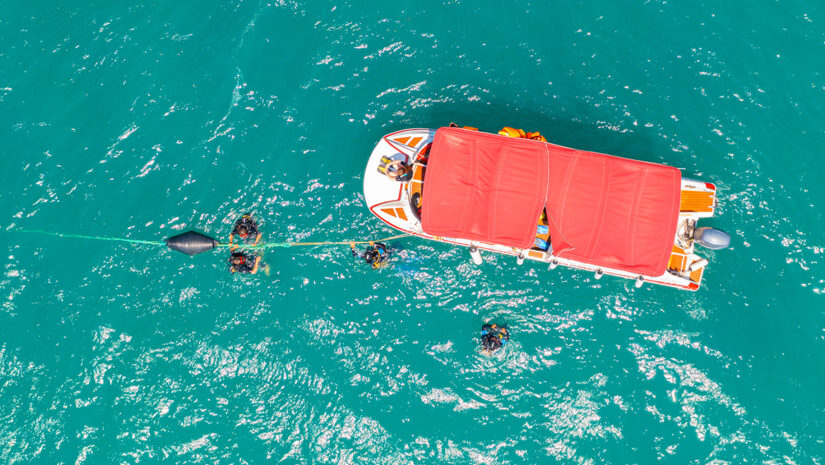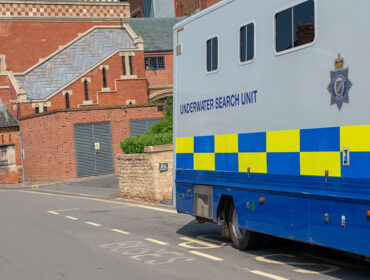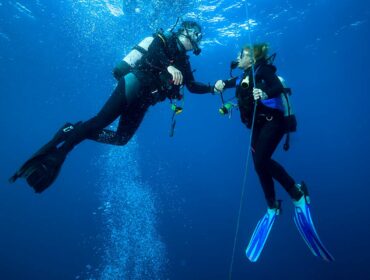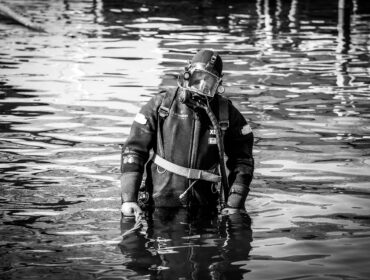Public safety diving is more than just diving—it’s a high-risk, mission-critical operation that requires exceptional skill, rigorous training, and precise coordination and deployment of the best scuba diving gear. Whether performing search-and-rescue missions, recovering evidence, or responding to disasters, our divers and diver tenders face challenges far beyond typical recreational diving. Operating in zero visibility, swift currents, extreme depths, and cold, murky waters are the realities these professionals regularly encounter.
Thankfully, we’ve come a long way. Advances in technology have dramatically transformed public safety diving. Innovations like sonar equipment, remotely operated vehicles (ROVs), and advanced dive computers are making underwater missions safer and more efficient than ever before. But while these tools offer incredible advantages, they should complement—not replace—the foundational skills and rigorous training public safety divers and tenders must maintain.
Let’s dive deeper into how technology and the latest scuba diving gear is reshaping public safety diving and why mastering the basics remains essential.
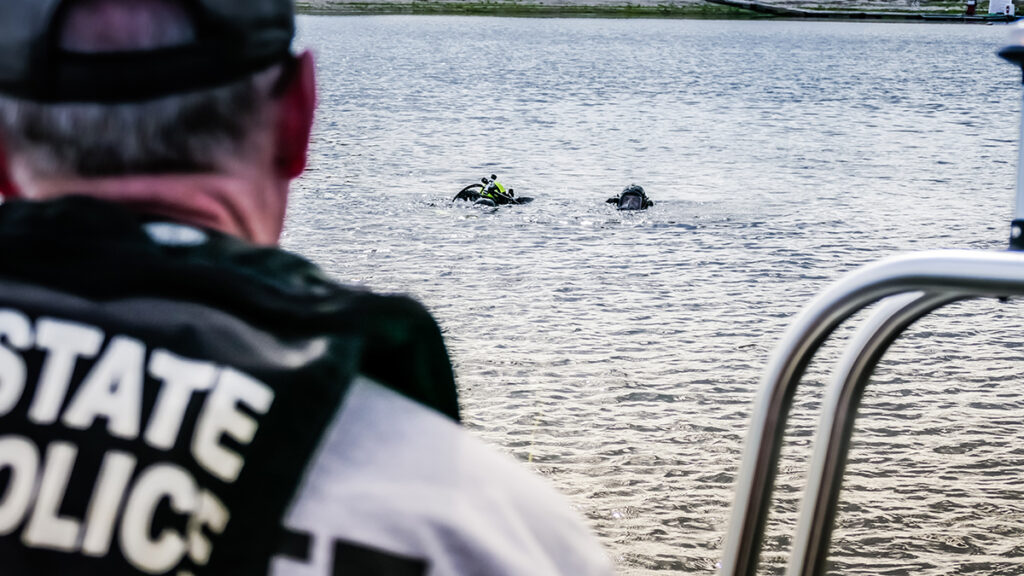
Sonar: Seeing Through the Murk
Sonar devices, including side-scan sonar and imaging sonar, offer a critical advantage in low-to-zero visibility conditions. These devices emit sound waves that reflect off underwater objects, creating detailed images of the environment that are unattainable through human vision alone. This capability allows divers to navigate and conduct searches in challenging conditions effectively. By providing a clear picture of the underwater terrain, sonar technology enhances the safety and efficiency of public safety diving operations by reducing the time our divers are underwater and exposed to hazardous environments.
The key benefits of sonar technology include:
Enhanced Visibility: Accurately mapping underwater terrain where divers’ vision fails.
Quicker Recovery: Efficiently locating victims, evidence, or debris, significantly reducing search times.
Improved Safety: Providing crucial data to avoid underwater hazards, protecting divers from unnecessary risks.
Brands like JW Fishers and BlueView continue advancing sonar precision, helping sonar operators and divers achieve safer and more effective operations.
ROVs: Extending the Reach, Reducing the Risk
Remotely operated vehicles (ROVs) are robotic systems capable of navigating challenging underwater environments without endangering divers. These robotic systems can navigate challenging underwater environments without exposing divers to potential hazards. Equipped with high-definition cameras, sonar, and manipulator arms, ROVs perform preliminary assessments, capture real-time visuals, and extend operational capabilities beyond human limitations. For instance, ROVs can conduct initial surveys of dive sites, identify potential hazards, and assist in search and recovery efforts, providing valuable data to surface teams.
The advantages of using ROVs are clear:
Safety First: Minimizing human exposure to dangerous conditions.
Broader Access: Exploring deeper or hazardous locations inaccessible to divers.
Real-Time Analysis: Streaming high-resolution video and data, enabling better-informed decisions and coordinated responses.
For example, the Qysea FIFISH E-GO E-E200A Professional Edition Underwater ROV offers robust visual feedback with a 4K UHD camera and 176-degree field of view, allowing surface teams to evaluate and strategize without placing divers at immediate risk. Its 10,000-lumen LED lighting system, with a 160-degree beam angle, ensures clear visibility even in the darkest environments.
For public safety diving teams, the integration of such advanced ROVs means they can conduct preliminary assessments and capture real-time visuals without exposing divers to potential hazards. This technology not only extends operational capabilities beyond human limitations but also significantly enhances the safety and efficiency of underwater missions.

Advanced Dive Computers: Smarter and Safer
Today, dive computers have become necessary equipment for different types of diving. Modern dive computers, such as the Shearwater pack AI-supported Teric, integrate AI-driven technology to enhance safety and performance and are becoming essential to modern scuba diving gear toolboxes. These smart devices monitor gas mixtures, track divers’ conditions, and offer GPS-linked navigation, greatly improving situational awareness underwater.
Yet, technology alone is not enough. Dive teams must continue rigorous training in traditional, analog methods—ensuring preparedness when technology fails or circumstances demand fundamental skills.
The Core of Public Safety Diving: Training and Fundamentals
Despite technology’s remarkable advantages, it should never become a crutch. As divers, we must continuously practice essential skills such as manual navigation, emergency procedures, buoyancy control, and precise communication. Knowing how to maintain, deploy, and use basic scuba diving gear and skills is paramount. Maintaining proficiency in these basics ensures our divers remain effective, resilient, and safe—even in the most challenging conditions.
In Port Neches, Texas, our water rescue team experienced firsthand how combining advanced technology, like AquaEye handheld sonar and Deep Trekker’s ROVs, with rigorous fundamental training dramatically improved response times and mission outcomes. But the key was balance: technology enhanced our effectiveness, while our fundamental diving skills ensured mission success.
Looking Ahead: Innovation with Responsibility
Looking ahead, future technologies, such as AI-driven drones and predictive analytics for disaster scenarios, hold enormous potential. Yet, responsible integration means ensuring divers remain adept at fundamental skills. Embracing new scuba diving gear and tools should enhance—not replace—our core competencies.
Together, technology and training form the backbone of effective public safety diving. This balanced approach not only saves lives but ensures our teams return safely after each mission, ready to dive again.
Let’s continue this important conversation, emphasizing both cutting-edge technology and essential dive training, ensuring a safer, brighter future beneath the surface. Chime in and tell us what you think.
Want to explore the forefront of this revolution? Check out the latest scuba diving gear, advanced sonar, ROV equipment, and cutting-edge scuba diving gear at scuba.com!
REFERENCES
- 1. FEMA, NIMS 508: Public Safety Dive Team, pending publication
- 2. FEMA, NIMS 509: Dive Team Leader, pending publication
- 3. FEMA, NIMS 509: Tender, pending publication
- 4. National Fire Protection Association (NFPA) 1006: Swiftwater Rescue Operations, 2017
- 5. Emergency Response Diving International (ERDI), Public Safety Diver certification
- 6. Professional Association of Diving Instructors (PADI), Public Safety Diver certification
- 7. Dive Rescue International (DRI), Public Safety Diver certification

